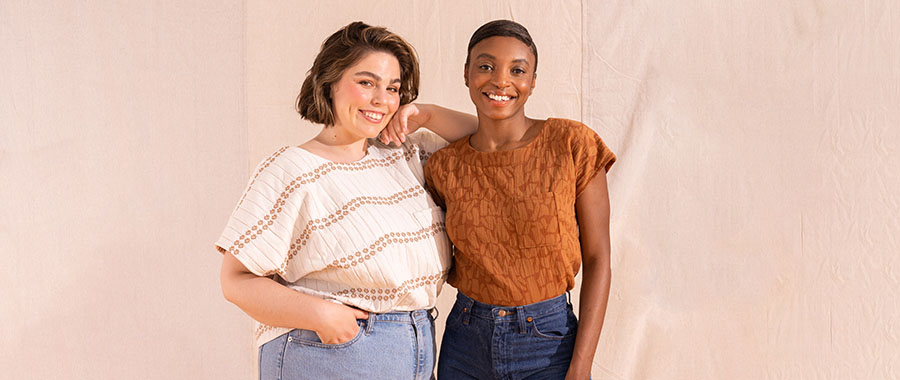Want to make your basic sewing projects more exciting and personal? Learn how to transform simple patterns into special garments that you'll love to wear every day. In this guide, we'll explore practical ways to elevate your basic sewing projects while maintaining their wearability.
Why Sew Basic Garments?
Many sewists avoid making basic garments because they seem boring. However, basics form the foundation of a wearable wardrobe. The key is learning how to make these essential pieces feel special and personal while maintaining their everyday functionality.
Essential Wardrobe Basics Worth Sewing
- Knit tops and t-shirts
- Button-up shirts
- Basic pants and jeans
- Sweaters and cardigans
- Simple dresses
5 Tips for Elevating Basic Patterns
1. Choose Colors That Make You Feel Your Best
Don't limit yourself to neutral colors unless that's what you truly love. Document your outfits for a period to identify which colors you wear and feel best in. Consider creating a palette of neutrals, basics, and statement colors for each season.
2. Find Your Perfect Fabric-Pattern Combination
Once you discover a winning combination of pattern and fabric, you can recreate it in different colors. This is especially useful for knit projects, where fabric performance can vary significantly. Finding reliable fabric sources that offer multiple colorways allows you to create consistent, well-fitting basics.
3. Study High-End Basics
Visit boutiques and high-end department stores to observe the details that make expensive basics special. Look for:
- Fabric composition
- Seam finishes
- Edge treatments
- Stitch quality
- Special design details
4. Choose Luxurious Fabrics
Elevate simple patterns by selecting high-quality materials. For example, make a basic t-shirt pattern in:
- Lightweight linen knit
- Pointelle rib
- Merino wool
- Organic cotton jersey
5. Add Intentional Details
Small touches can transform a basic garment:
- Uniquely shaped patch pockets
- Contrasting linings
- Special buttons
- Contrast topstitching
Design Process Tips
Take at least 15 minutes to plan your basic projects. Sketch your design or list the special details you want to include. This planning stage helps transform a simple project into something personally meaningful.
